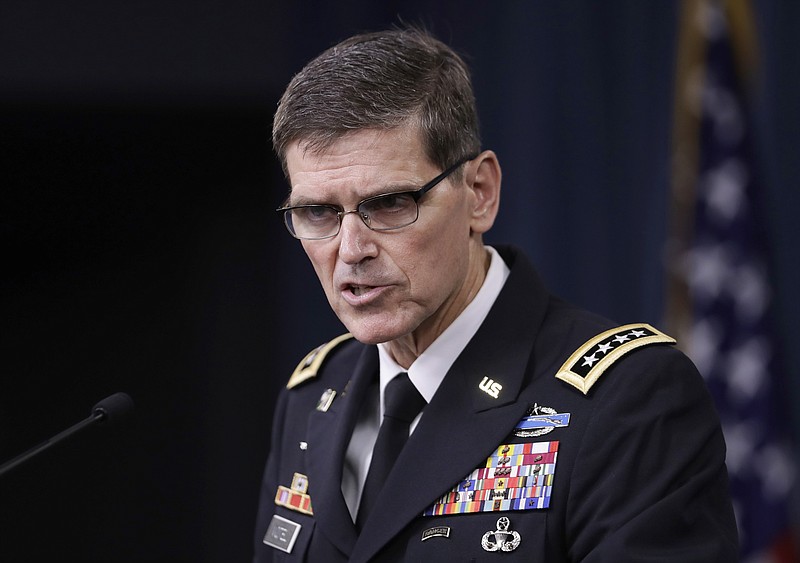WASHINGTON (AP) — U.S. military leaders are considering new guidelines for the use of helmet cameras on the battlefield after Islamic State-linked fighters in Niger exploited footage taken by a fallen American soldier to make a propaganda video to highlight the killing of four U.S. forces.
Weeks after the deadly October ambush, people linked to the militants shopped around the grisly footage to news organizations. When few expressed interest, the insurgents added music and propaganda, made a short movie and posted it online. Then it was written about in a number of news stories around the world.
The Islamic State group’s capitalization on its fortunate find after the northern Niger battle highlighted the risk for the U.S. military of its men and women using the popular mini-cameras on missions. Experts said military officials are likely to respond with tighter controls.
“The need for clear guidance on the use of cameras in operations was amplified by the ambush in Niger,” said Navy Capt. Jason Salata, spokesman for Special Operations Command, based in Florida. And U.S. Africa Command, which doesn’t have its own policy on the issue, is also doing a review to determine whether new guidelines are required, said Army Col. Mark Cheadle, spokesman for the command.
The goal is to ensure commanders understand the risks when they authorize helmet cameras or other video to be recorded. One idea centers on security measures to make it harder for enemies who get their hands on such footage to use it.
“I think they’re doing the right thing by saying, ‘Well, we can’t limit its usage, we’ve got to limit its vulnerabilities, things like encrypting them,’” Spencer Meredith, associate professor of national security at the National Defense University, said. “So, how do we take something like a helmet cam, which is a vital tool for ISR (intelligence, surveillance and reconnaissance), for training, for mission analysis, for after action reports and put limits on its vulnerabilities?”
While some form of encryption would be the most likely approach, Meredith said, other technological fixes include ways to limit the battery life or otherwise make a device inoperable after a certain period of time. Other guidelines could address who can approve the use of helmet cameras and similar technology, and where and how they can be used.
The commanders of U.S. forces in Africa and the Middle East will testify before the Senate Armed Services Committee on Tuesday.
The military’s increased usage of GoPros and other video cameras reflects their booming presence in our everyday lives. Such technology can deliver bird’s-eye views of skiers hurtling down the slopes, divers exploring the sea floor, breathtaking parasailing tours and whitewater rafting. It takes no special training for amateurs to get in on the act.
But the technology’s penetration of the military over the years has been uneven. It was originally more prominent among special operations forces, but has since expanded to conventional troops as the cameras became more widespread and more commanders became convinced of their value.
The benefits range from training to assistance on the battlefield. Troops often wear the cameras during drills as a way to hone skills, identify shortcomings and work through various exercise scenarios. Once deployed, forces use them on missions, capturing film of enemy operations or gathering intelligence.
The video is generally stored on the camera, not live-streamed back to observers or commanders. It can be useful after a mission to review details, analyze enemy tactics, or to prove or rebut charges of abuse or civilian casualties. For example, U.S. forces have tried to use video to capture dangerous incidents involving Iranian or Russian aircraft or ships, hoping to document what happened in case complaints are challenged.

